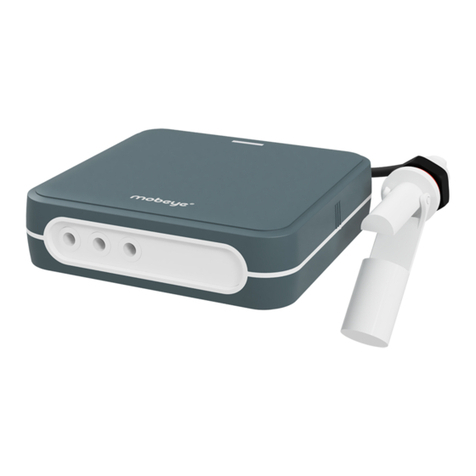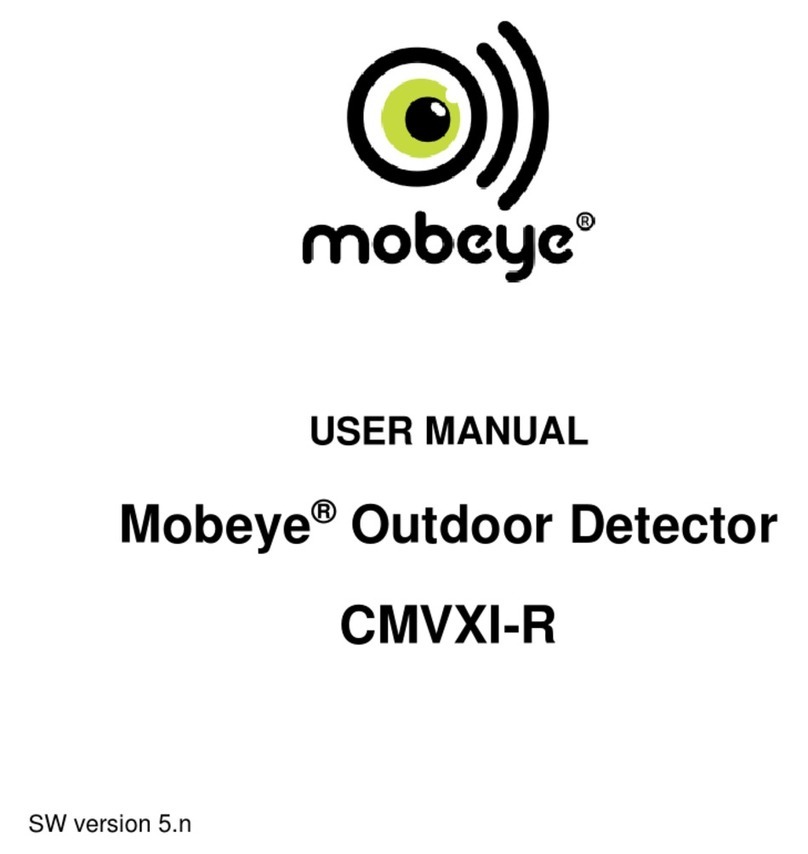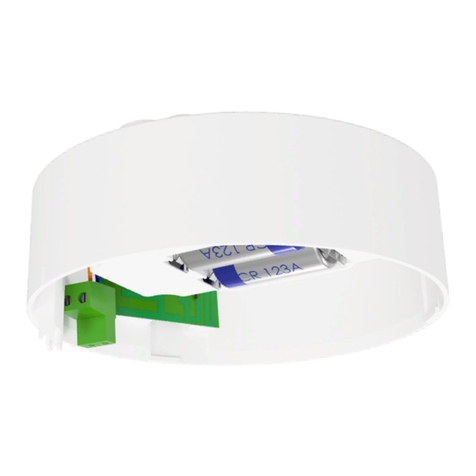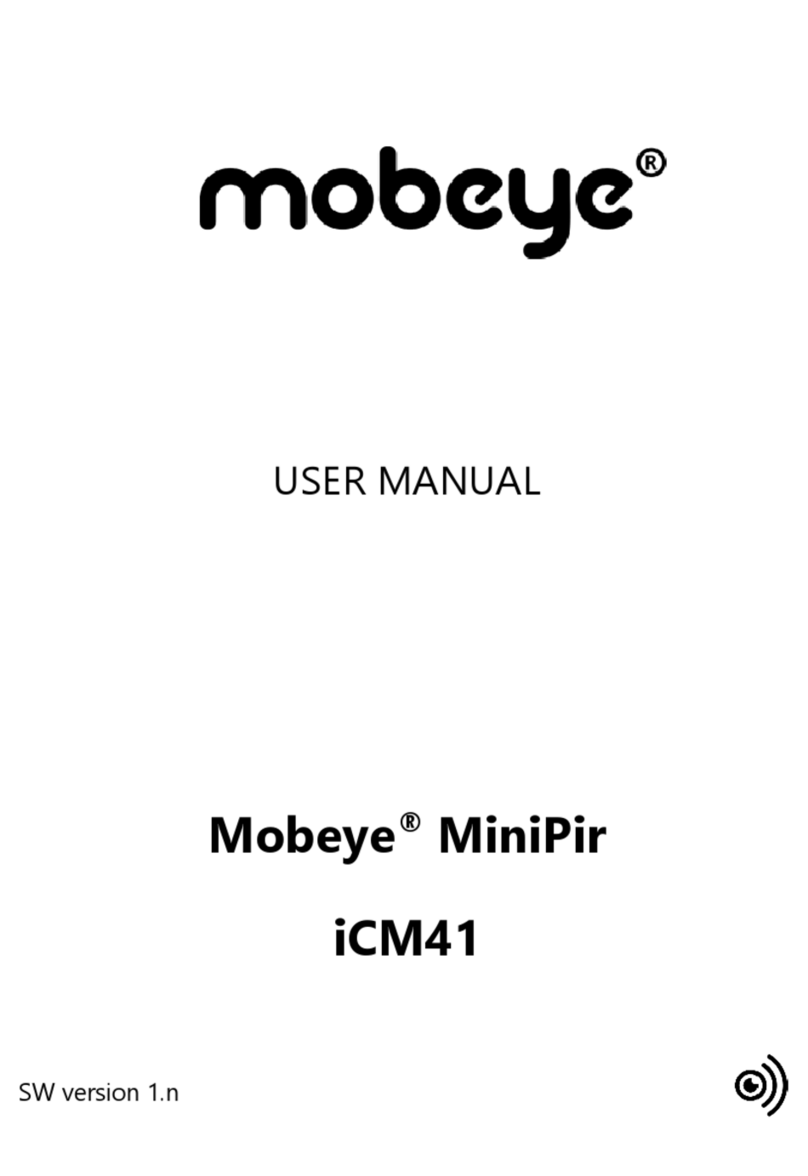3
2.3 INSERT THE BATTERIES
Insert the two batteries (CR123) in the module. Use the +/- indication for the correct
placement.
2.4 ENTER THE PROGRAM MODE
Directly after inserting the batteries, the Mobeye Outdoor Detector switches to the
program mode. First the GSM module establishes network connection. During this
time the LED in the tag reader flashes green and red. Within 10-30 seconds the
connection is established and the LED starts flashing 1 sec. on/1 sec. off (or stays on
continuously in case the first telephone number has been configured).
The Mobeye Outdoor Detector returns to the program mode by holding the tag to the
tag reader for 5 seconds (make sure the tag connects to the metal plate and the ring at
the same time), until the LED starts flashing red/green. Once it has GSM connection it
will be flashing again (or stays on continuously). Alternatively the batteries can be re-
inserted, without holding the tag to the reader.
As long as the unit is in program mode, the status green LED is on (or flashing 1 sec.
on/1 sec. off if the module has no configuration). During the first 3 minutes, the GSM
module remains active, ready to receive SMS commands. After 3 minutes a time-out
occurs and the GSM module switches off in order to save the batteries. The unit
returns to the low power operational mode.
2.5 PROGRAM AT LEAST ONE TELEPHONE NUMBER
The Mobeye Outdoor Detector is able to send messages up to 5 telephone numbers.
The first telephone number (TEL1) belongs to the administrator. Technical messages
(such as battery low) are sent to the administrator only. Without the TEL1, the Mobeye
Outdoor Detector cannot function.
When the Outdoor Detector is in initial (factory) status and the batteries are inserted
(so the LED is flashing), the administrators’number is programmed by calling the
telephone number of the Mobeye Outdoor Detector using the administrators’ phone.
The unit will recognize this number and store it as administrator (TEL1). The
administrator will receive a confirmation SMS text message including the security
code. This code is needed to program the other settings in the unit.

































